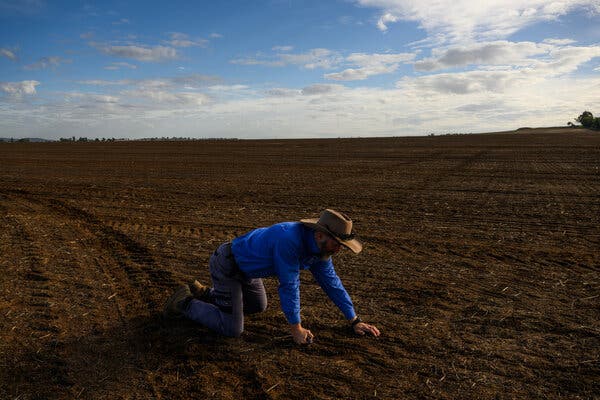Across 100,000 acres in the vast agricultural heartland of Australia, an unusual approach is taking root to slow down the wrecking ball of climate change. Farmers are trying to tap the superpowers of tiny subterranean tendrils of fungus to pull carbon dioxide out of the air and stash it underground.
It’s part of a big bet that entrepreneurs and investors around the world are making on whether dirt can clean up climate pollution. They are using a variety of technologies on farmland not just to grow food but to also eat the excess carbon dioxide produced by more than a century of fossil fuel burning and intensive agriculture.
Why fungus? Because fungi act as nature’s carbon traders. As they sow their crops, farmers are adding a pulverized dust of fungal spores. The fungus latches on to the crop roots, takes carbon that is absorbed by the plants from the air and locks it away in subterranean storage in a form that may keep it underground for much longer than the natural carbon cycle.
The fungal venture, the handiwork of an Australian company called Loam Bio, is among several start-ups to have mobilized hundreds of millions of dollars in investments in efforts to use soil to remove carbon dioxide from the atmosphere. Like Loam Bio, companies like Andes and Groundworks Bio Ag are also experimenting with microbes. Lithos and Mati offer farmers crushed volcanic rocks that absorb carbon to sprinkle on their fields. Silicate Carbon is milling leftover concrete into a fine powder, while several companies are scorching crop waste into charcoal.
The appeal of the Australian start-up is that it doesn’t demand too much of farmers.
“Pretty simple,” is how a fifth-generation Australian farmer named Stuart McDonald described his experience as he sowed a dusting of fungal spores with his wheat and canola seeds on his farm near Canowindra this year. “It’s not asking us to change too much. It’s not a big capital outlay.”
